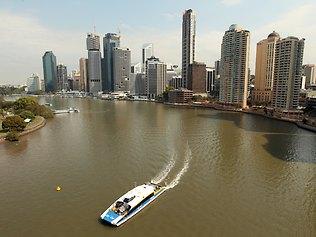Ageing offices concern for Brisbane
BRISBANE faces a rapidly ageing stock of commercial buildings as pressure builds on landlords to upgrade them.

BRISBANE faces a rapidly ageing stock of commercial buildings as pressure builds on landlords to upgrade them to modern standards.
Queensland University of Technology construction researcher Professor Jay Yang said the average age of office buildings in the city was around 29 years.
And he said it would mean a "big bill'' to replace or upgrade them so they could withstand the challenges of the future.
Prof Yang said many office buildings had now reached a critical period if they were to undergo a major upgrading and refitting.
"If our office buildings are left as they are they will continue to have high-energy consumption and high output of carbon dioxide,'' Prof Yang said.
"They may not cope with changing business-operating patterns.''
After a construction boom in the 1980s and spikes in the 1990s and mid-2000s, there have been few office towers knocked down to make way for new ones.
The last one was about four years ago when GPT demolished the 17-storey Indigo House to make way for its premium tower, One One One Eagle Street.
The Dexus-owned 123 Albert St tower was formerly a five-level carpark, while the yet to be completed Leighton Properties 27-storey King George Central at 145 Ann St and Grocon's ATO tower at 55 Elizabeth St were both older two-level buildings.
Instead of knocking buildings down many landlords have preferred to hold their assets and refurbish them.
Prof Yang said the "re-lifing'' of older buildings was generally more cost effective and had a lower carbon footprint than demolition and the construction of a new tower.
Jones Lang LaSalle's CEO - Australia, Stephen Conry agreed that office buildings in the city were growing older.
He said during the '80s building boom the CBD doubled in size.
"There were some buildings that were average in quality but there were others built back then that are the new generation of intelligent buildings - the Riverside Centre, Central Plaza and Waterfront Place,'' he said.
"They are premium buildings and are comparable to those being developed today.
"But it's all about degrees of maturity and degrees of the need to maintain them.''
Mr Conry said there were less buildings being demolished now than in the '70s and '80s. "That's because the techniques to upgrade them are better,'' he said.
"You can upgrade a building and have them to a standard that is very acceptable today. That may be the reason why Brisbane doesn't have many vacant sites for development because we aren't demolishing them.''
